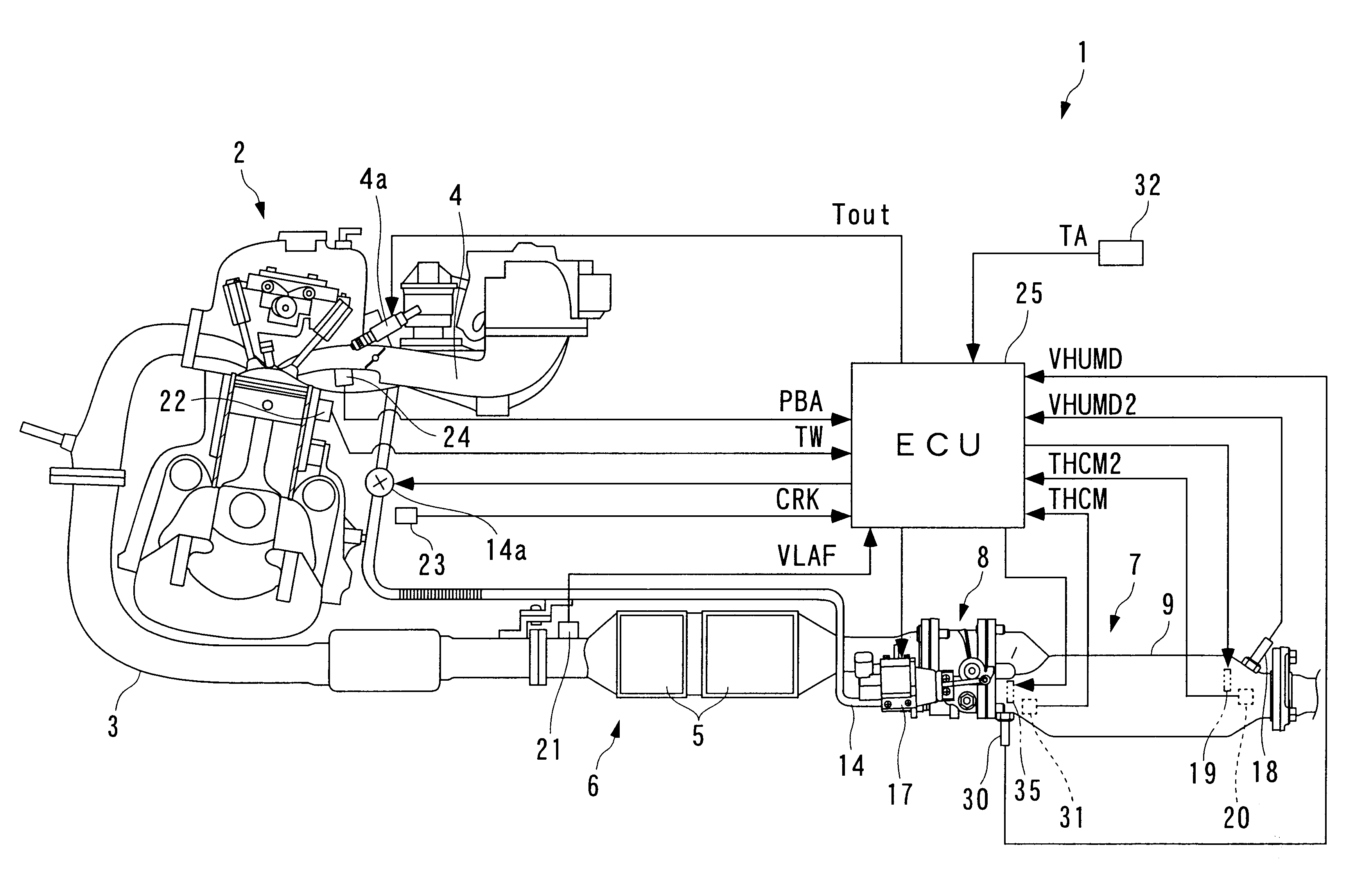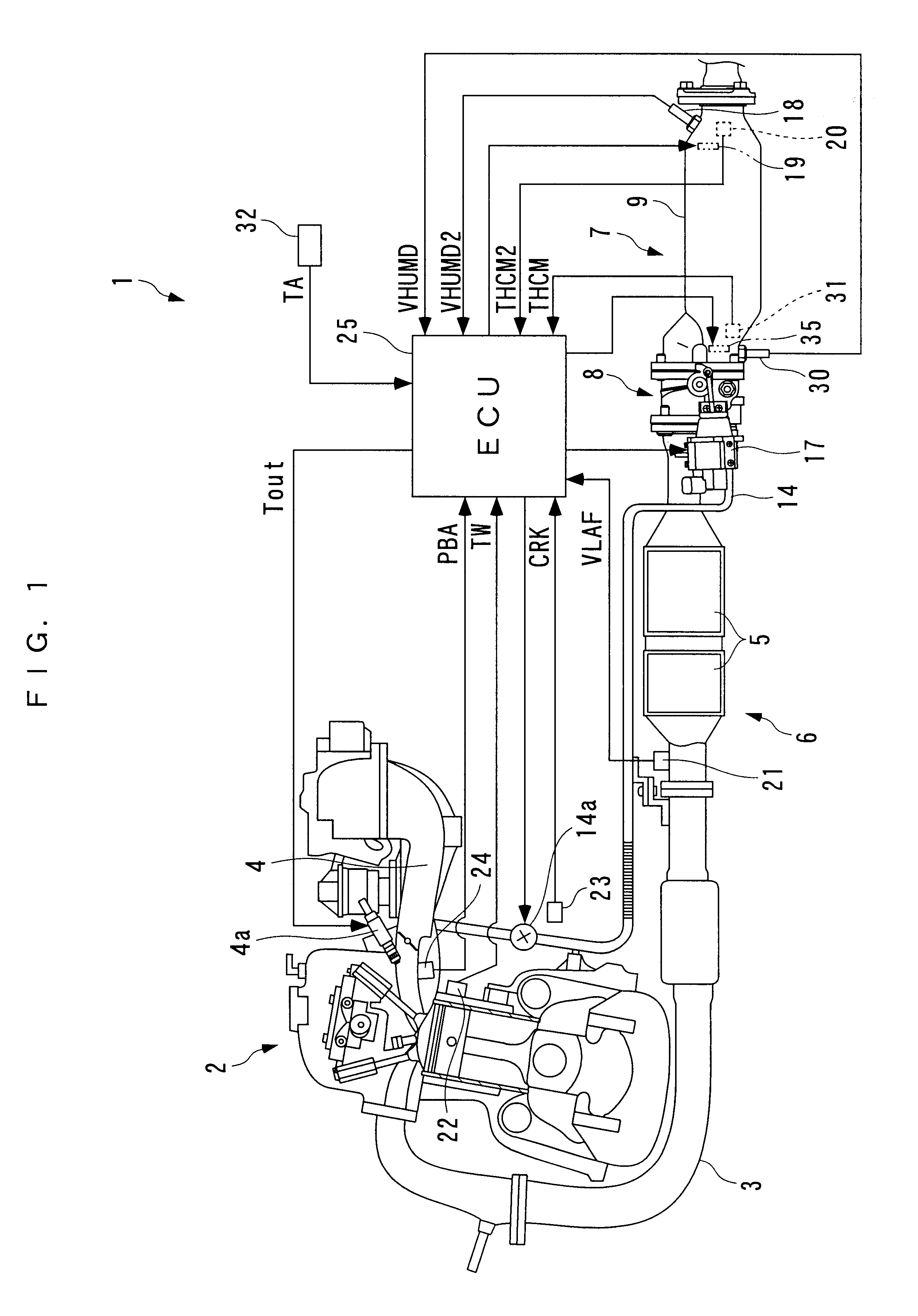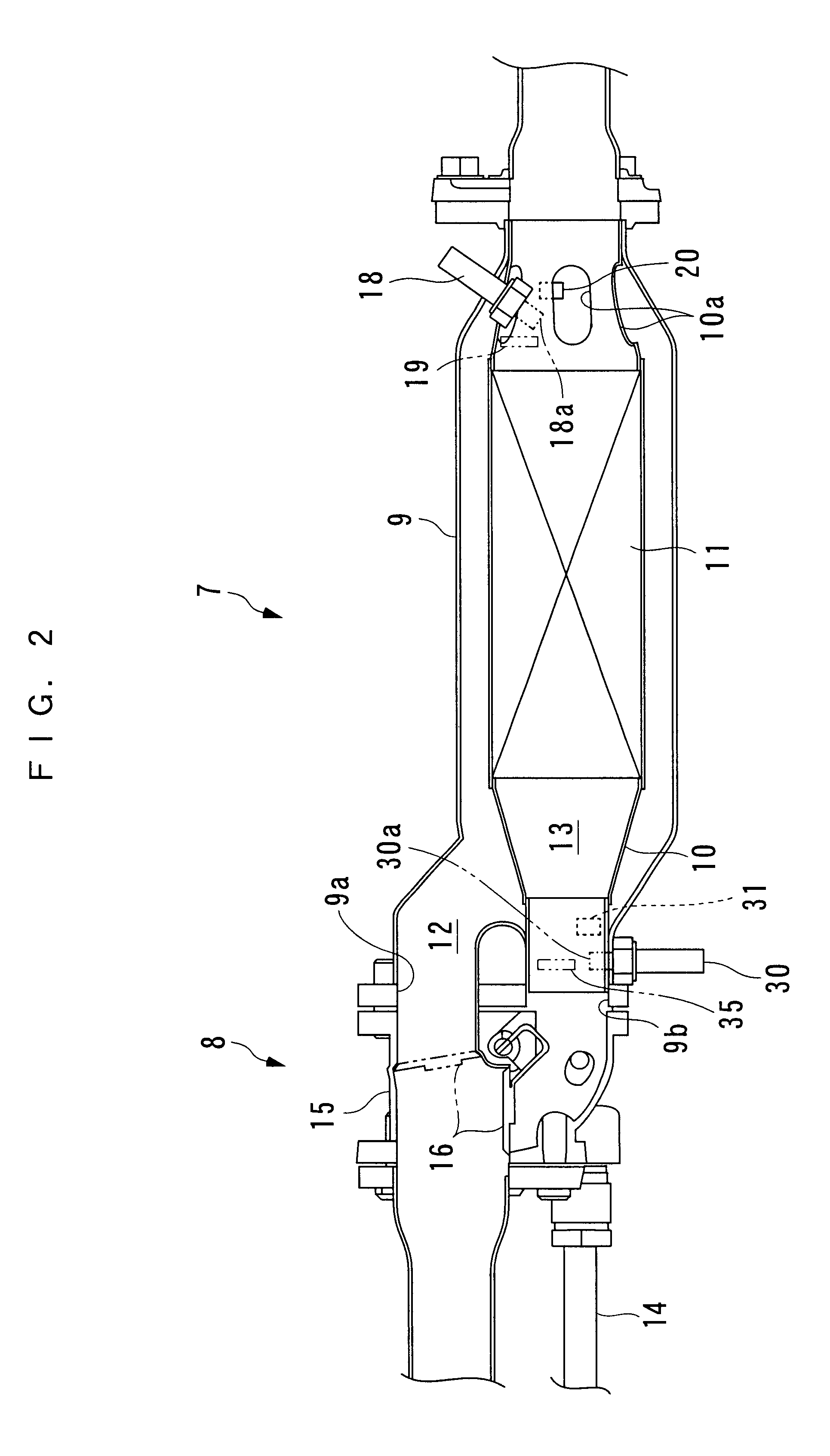Temperature control system for humidity sensor
a temperature control system and humidity sensor technology, applied in electrical control, exhaust treatment electric control, separation processes, etc., can solve the problems of hydrocarbons which cannot be desorbed and permanently remain in the adsorbent, and affecting the adsorption effect of the adsorbent,
- Summary
- Abstract
- Description
- Claims
- Application Information
AI Technical Summary
Benefits of technology
Problems solved by technology
Method used
Image
Examples
Embodiment Construction
The invention will now be described in detail with reference to the drawings showing a preferred embodiment thereof. Referring first to FIG. 1, there is schematically shown the arrangement of an internal combustion engine 2 (hereinafter simply referred to as "the engine 2") to which is applied a temperature control system 1 for a humidity sensor (hereinafter simply referred to as "the control system 1"), according to the embodiment of the present invention. This engine 2 is e.g. a four-cylinder four-cycle engine installed on a vehicle, not shown, which has an idle stop feature. Further, the engine 2 includes an intake pipe 4 having injectors 4a provided for respective cylinders, and the fuel injection time period Tout of each injector 4a is controlled by an ECU 25, referred to hereinafter.
In an intermediate portion of an exhaust pipe 3 of the engine 2, a catalytic device 6 having a three-way catalyst 5, and a hydrocarbon adsorber 7 for adsorbing hydrocarbons are arranged from the up...
PUM
| Property | Measurement | Unit |
|---|---|---|
| temperature | aaaaa | aaaaa |
| temperature | aaaaa | aaaaa |
| temperature | aaaaa | aaaaa |
Abstract
Description
Claims
Application Information
 Login to View More
Login to View More - R&D
- Intellectual Property
- Life Sciences
- Materials
- Tech Scout
- Unparalleled Data Quality
- Higher Quality Content
- 60% Fewer Hallucinations
Browse by: Latest US Patents, China's latest patents, Technical Efficacy Thesaurus, Application Domain, Technology Topic, Popular Technical Reports.
© 2025 PatSnap. All rights reserved.Legal|Privacy policy|Modern Slavery Act Transparency Statement|Sitemap|About US| Contact US: help@patsnap.com



